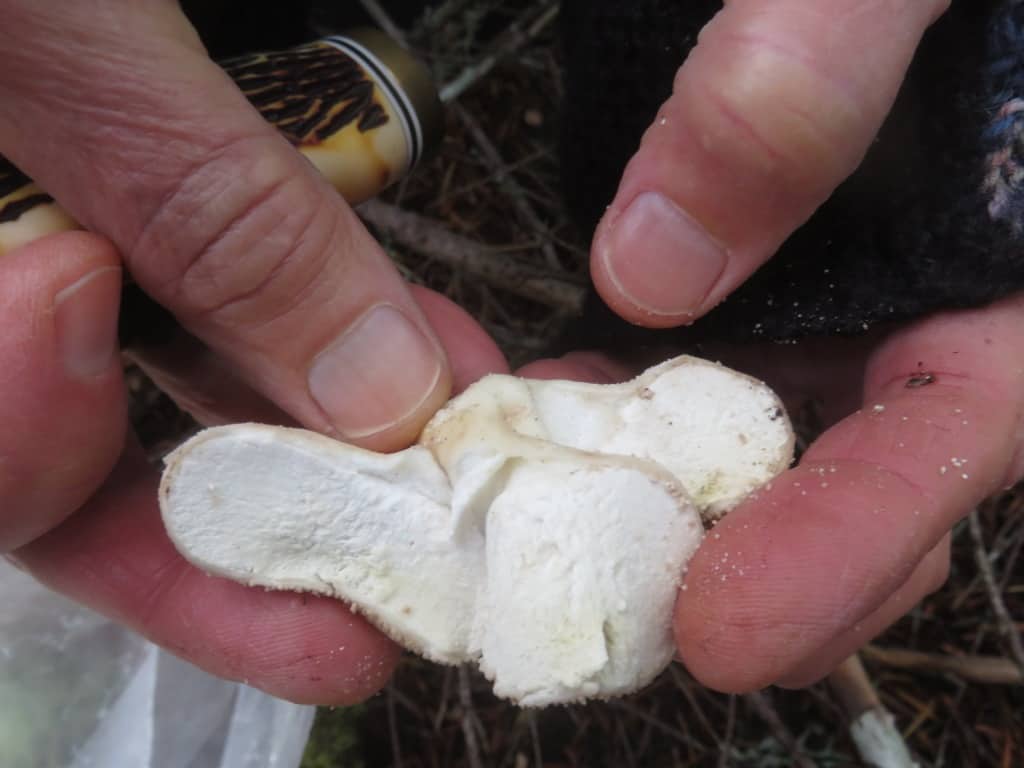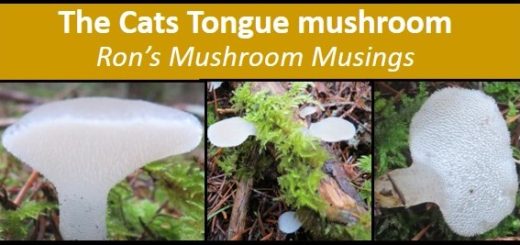The Ubiquitous Puffball
During my younger years I can honestly say that mushrooms were never really on my radar. My mother would tell me childhood stories of how I would often come home with insects stuffed into every pocket of whatever I was wearing. She said the worst time was when I found a large cluster of tent caterpillars that I pocketed to take home as pets. She didn’t even bother to wash that outfit and I ended up naked in a large metal basin outside being hosed down. My insect pocket stuffing obsession abruptly ended one summer after I snatched a bumblebee off a flower and was aptly stung for my misdeed. At that moment I learned the lesson that actions can have unpredictable as well as undesirable consequences. I quickly changed my focus to stuffing my pockets with things like shiny pebbles and acorns, which also made my mother much less squeamish when it came to emptying them out.

My first recollection of interacting with mushrooms was when I saw a friend doing the puffball stomp. I was amazed at the enormous cloud of dark dust that gushed out from all around his shoe. I was much too young to understand the dynamics of what had just taken place but truthfully, I didn’t care. This was way cooler than tempting fate by snatching up insects or loading up on acorns, and it turned your shoes black! Flash forward half a dozen decades and I’m still interested in puffballs, but for a completely different reason. Now they are on our list of culinary mushrooms to enjoy. However, an occasional puffball stomp is difficult to pass up and it still gives me a little chuckle whenever I indulge myself.

In Oregon and areas west of the Rockies, the most spectacular puffball is the Giant Western Puffball (Calvatia booniana). This bad boy can obtain a size that would make a bowling ball blush. Can you imagine doing the puffball stomp on one of these mega-mushrooms? The construct of puffballs is pretty straight forward and quite ingenious. Simply wrap a mass of developing spores in a globe like structure and when the spores are ready, allow the surface to crack or form a fissure at the top; then let nature or a shoe help expel the spores into the atmosphere. While these giants are more typically found east of the Cascade Mountain Range, back in November of 2009 Sandy eyed this pair of modest sized puffballs just off the Willamette River Path. As you can see, the Boris Johnson free flying hair style was all the rage back then. Sadly, being follicly challenged I could not participate in the fad although I did stop combing my mustache for a couple of months. No one noticed!

The key to eating one of these interesting globes is finding them at the right time of development. You want to make absolutely certain that the interior of the puffball is solid white. Any traces of yellow, green, or any other color can make you sick if you eat it. A good example of interior color and texture can be seen in a very attractive yet much smaller puffball commonly called the Gem-Studded Puffball (Lycoperdon perlatum). As you can see from the photo to the right, the interior is solid white with a texture similar to a firm-ish marshmallow. You will also notice the interior is uniformly textured.

This is extremely important as the universal veil of newly developing Amanita mushrooms also start out looking like a white egg. However, unlike puffballs, slicing an Amanita egg in half, as seen in the photo to the left, will reveal the beginning structure of the mushroom’s body. Performing this interior check cannot be overstated as several Amanita species are deadly poisonous and during their egg stage it is impossible to tell what species of Amanita you’ve found. On the positive side, most true puffballs are considered edible when young. True puffballs reside in the genera Calvatia, Calbovista and Lycoperdon. While mushrooms commonly known as earthstar also dispense their spores through a fisher at the top of their globe, they are in the genus Geastrum and are not considered true puffballs nor are they considered edible.

If you happen upon a cluster of puffballs during your mushroom hunt, and I have no doubt you will, it is not necessary to pick each one and slice them in half to determine edibility. Doing so would be very time consuming and leave quite a lot of unnecessary carnage behind. Instead, you can determine which ones might be suitable for the sauté pan and which ones have already developed past the point of culinary use by simple visual observation. By taking a quick look at the outer color of this cluster of Gem-Studded Puffballs I can already tell they have developed way past their “white interior” stage and are getting close to puffball stomping quality. In its usable form, the outer color would be white to whitish and would not have started taking on any brown or dark coloration. Once you have collected what you need for cooking, do not let them just lie around the house as they will continue to quickly mature beyond usefulness.
Now that you are ready to sauté up your puffball booty, you’ll want to clean them up with a brush or cloth as washing them under water should not be necessary and can lessen their quality. As a final precaution, cut each in half to verify that you have chosen those with a solid white interior and discard any that are overly developed or, heaven forbid, show the outline of a mushroom structure. If you find yourself frequently bringing home Amanita eggs believing they are puffballs, I would seriously recommend sticking with cremini or portabella mushrooms from your local grocery store. Otherwise, if what you brought home looks a lot like what’s in this photo, you’re all good.

For sautéing, I like to cut them into quarter inch slices and place them in the pan so they can each have full surface contact. You can also cube them and sauté them that way. I like to use olive oil at first then infuse some butter to help them brown up and give them that umami character. If you are unfamiliar with the term umami you are in good company as I really have no idea what it means either. I just know they use it on cooking shows all the time so I added it just to cover all the bases. Once your mushrooms have reached that stage of being golden brown, they are ready to eat à la carte or added to whatever recipe you are making. As for flavor, I found puffballs to be quite tasty, Sandy says they remind her of chicken, and several websites say their flavor is similar to that of tofu. By combining everyone’s thoughts together you come up with tasty chicken tofu.
If you decide to try puffballs, the best place to find the Giant Western Puffball is east of the Cascade Range anytime from late summer into the fall. You’ll find them in meadows, pastures, as well as forested areas. The Gem-Studded puffball is very common just about everywhere and typically occurs in large clusters. Just be certain of your identification and as with any new mushroom, only try a few bites at first, abstain from alcohol and wait 24 hours to make certain you do not have any allergic reactions to it. If everything works out ok, try some of the recipe links below.
References:
Puffball on Wikipedia
Puffball Recipes:
Cooking, Cleaning, and Preserving Puffballs w/recipes – Mycological Society of San Francisco
Classic Fried Puffballs – Forager Chef
Puffball Parmesan – Health Starts in the Kitchen
Giant Puffball Recipes – Kitchen Frau





